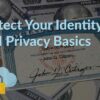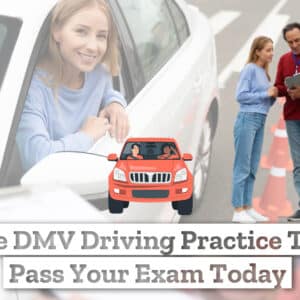How to Get Your Drivers Permit: Complete Guide
Getting a drivers permit is exciting for young people. It means you can drive and feel free. But, it can also be scary. With the right help, getting your permit is easy and makes you feel strong.
This guide will show you how to get your permit. It’s for high school students, college students, or adults getting their first license. You’ll learn everything you need to know to become a safe driver.
Understanding Drivers Permit Basics
Getting a driver’s license is a big step for many. But first, you need a learner’s permit. These permits are the first step to learning how to drive. They have different rules and restrictions.
Types of Learner’s Permits Available
States offer different learner’s permits. Some let you drive with a licensed adult. Others give more freedom as you get more experience.
Age Requirements by State
The age to get a learner’s permit varies by state. It’s usually between 14 and 16. Knowing your state’s rules helps you apply smoothly.
Permit Validity Period
Learner’s permits are good for a certain time, like 6 months to 2 years. You’ll need to practice, take classes, and pass a test to get your full drivers license. Knowing how long your permit is valid helps you plan.
Learning about learner’s permits helps you get your driver’s license. It teaches you to be a safe and responsible permit holder.
Essential Documents Needed for Application
When you apply for a driver’s permit, you need to bring certain documents to the DMV. These include proof of who you are, where you live, and that you’re allowed to be in the U.S. It’s important to check the DMV handbook for your state. This is because the needed documents can change.
Typically, you’ll need a birth certificate, a social security card, and two proofs of where you live. These can be utility bills or bank statements. Your state might also ask for proof of your legal status. This could be a permanent resident card or a valid passport.
Make sure to look at the driver’s license requirements for your state. Gather all the needed documents before you go to the DMV. This will make your application process easier and faster.
State-Specific Requirements and Regulations
Getting a driver’s permit varies by state. Each place has its own rules and laws. These can change how you get your permit, from age to study materials.
Graduated Licensing Systems
Many states use graduated licensing systems. They help new drivers learn slowly. These systems limit passengers, driving hours, and roads.
Knowing your state’s rules is key. It helps you pass the permit process.
Required Study Materials
Study materials for the test also vary. Most states give a DMV handbook. It covers permit rules in detail.
It’s important to study these materials well. They help you pass the written test and move to driving practice.
Preparing for the Written Knowledge Test
Getting your drivers permit is a big step towards freedom and independence. Passing the written knowledge test is a key part of this process. Make sure you know the drivers permit, driving test, and DMV handbook rules in your state.
Begin by studying the DMV handbook carefully. It covers traffic laws, road signs, and safe driving tips. Use practice tests online or at your local DMV to help. These tests show you what you need to work on and what the real test is like.
For the test, focus on the basic road rules, traffic signs, and what it means to have a drivers permit. With hard work and dedication, you’ll pass the test. Then, you can move closer to getting your full driver’s license.
Cost of Getting Your Drivers Permit
Getting a drivers permit is a big step towards getting your full license. But, it comes with costs. You’ll need to pay for application fees, study materials, and maybe extra training. It’s important to know what you’ll spend.
Application Fees
The first cost is the application fee for your permit. This fee changes by state, but it’s usually between $20 and $60. It might seem like a lot, but it covers the cost of processing your application.
Study Material Expenses
To get ready for the written test, you’ll need study materials. This includes practice tests, guides, or online courses. Prices vary from a few dollars for digital items to $20 or more for books. Setting aside money for these materials will help you pass the exam.
Additional Training Costs
Some places require or suggest behind-the-wheel training before the road test. These extra training sessions can cost $50 to $100 per hour. The price depends on where you are and the school you pick. Knowing these costs helps you budget for the *drivers permit* process.
Understanding the costs of getting a drivers permit helps you prepare and budget. It’s a key step on your way to becoming a licensed driver.
Behind-the-Wheel Training Requirements
Getting a driver’s permit is just the start. To get ready for the driving test, you must do behind-the-wheel training. This hands-on learning is key to mastering permit rules and driving safely.
Most states ask you to practice driving with a licensed driver before the driving test. The number of hours needed varies, but it’s usually between 40 to 70 hours. Some of these hours must be at night or on highways.
In behind-the-wheel training, you’ll use what you learned from your permit studies. You’ll get used to driving in different situations. An experienced driver will guide you, giving you feedback to improve.
By doing the required practice hours and getting feedback, you’ll be ready for the driving test. You’ll also feel more confident and skilled to drive safely on the road.
Common Permit Restrictions and Rules
When new drivers start working towards a full license, they must follow certain permit restrictions and rules. These rules help keep the roads safer. They are part of a graduated licensing system, which slowly teaches young drivers about driving.
Supervision Requirements
One key rule is that permit holders need a licensed adult to supervise them. They can only drive with a parent, guardian, or someone else the state has approved. This rule helps them learn by having someone experienced in the car.
Time and Location Limitations
States also have rules about when and where permit drivers can drive. They might not be allowed to drive at night, on certain roads, or in bad weather. These rules help them get used to different driving situations.
Passenger Restrictions
There are also rules about who can ride with permit drivers. These rules might say they can’t have too many friends in the car or that certain people can’t ride with them. This helps the driver stay focused on driving.
By following these permit restrictions and rules, new drivers can learn a lot. They become more confident and ready for a full driver’s license.
Tips for Passing Your Permit Test
Getting your drivers permit is a big step towards driving on your own. But, the written driving test can be tough. Don’t worry, with the right prep, you can pass with flying colors. Here are some tips to help you nail your drivers permit exam.
Start by studying the DMV handbook for your state. It’s packed with key info on traffic laws and safe driving. Get to know it well and practice answering questions. This will boost your knowledge and confidence.
Also, try out a practice driving test online or at a driving school. These tests give you feedback and show you what to work on. Focus on any areas that are hard for you and keep practicing until you’re sure.
When it’s time for your drivers permit test, get there early and well-rested. Don’t rush, take your time to read and understand each question. The test checks your knowledge and decision-making, not how fast you answer. Stay calm, focused, and trust your hard work.
Moving from Permit to Full License
Getting a driver’s license is a big deal, but it takes time. First, you learn the permit rules and pass a written test. Then, you move on to getting a full license. This step includes passing a road test and showing your progress.
Required Practice Hours
Most states ask for a certain number of hours of supervised driving practice before the road test. This helps you get used to driving before you drive alone. Make sure to keep a record of your practice hours.
Road Test Prerequisites
Before the road test, you must meet some driver’s license requirements. You might need to pass a vision test, show proof of insurance, and book your test early.
Documentation Needed
When it’s time for your road test, have everything you need. This includes your learner’s permit, ID, and any other forms or fees your state asks for.
Conclusion
Starting your journey to get a drivers permit is exciting. Remember the key steps and requirements from this guide. You now know how to move forward.
Whether you’re a teen or an adult, following the rules is key. Get your documents ready, pass the written test, and complete driving lessons. This will help you get your permit and enjoy the freedom of driving.
The path to a driver’s license changes based on where you live, your age, and your situation. But with hard work and focus, you can do it. Stay informed, drive safely, and take action to make your driving dreams come true. Visit: https://www.documentsedit.com/product-category/driver-license/






Add comment